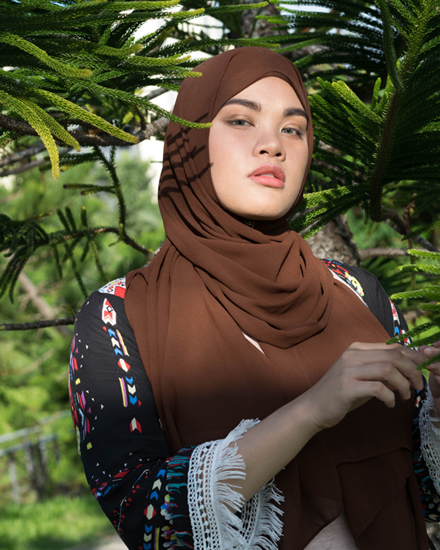Mipster Fashion
Freiburg, Nov 22, 2018
Is Islam modern or backwards, multifaceted or uniform? The image people hold of the religion largely depends on the appearance of women, says Freiburg cultural anthropologist Dr. Fatma Sagir. If a Muslim woman wears a headscarf and long, all-enveloping clothing, Islam is defined as oppressive. But if she appears bareheaded and in trendy clothes, the religion is seen as enlightened. Now, young Muslim woman are increasingly claiming the right to shape their lives as they see fit and to put them on show as well – for instance as fashion bloggers.
![]()
Bloggers reveal many aspects of their everyday lives on the Internet – and many users express amazement at how ‘normal’ the lives of young Muslims are. Photo: Rapixel/Unsplash
When Layla Shaikley posted a video on YouTube, she never anticipated the debate it would ignite in the next few weeks. The short film shows Shaikley and her friends, skateboarding around a car park, eating ice-cream cones and strutting around New York City in high heels and skinny jeans. Meanwhile the bass from a hip-hop song booms in the background. Every one of the women wears a headscarf.
The video led international media and Internet users to discuss how the Americans presented themselves. “Conservatives from both the Muslim and non-Muslim camps described the presentation as unfeminine, un-Islamic,” says Dr. Fatma Sagir. The Freiburg cultural anthropologist found the video a few years ago and in her research discovered a generation of young women and men who call themselves ‘Mipster’ – short for ‘Muslim hipster’. Shaikley also gave her video this title. Sagir researches how Mipsters and other Muslims deal with questions of belonging and identity in western societies.
Everyday scenes
Sagir analyzes, for example, how young people present themselves on Instagram or YouTube. “Superficially the videos and photos show what they wear, where they travel, what they cook or how they take their children to school,” explains Sagir. “But looking more closely reveals what really interests them”– that is, who they are as modern Muslim women. Women above all allow other users to share in their lives. Sagir attributes this to the fact that platforms such as Instagram and lifestyle themes are on the whole generally more popular with women. In addition, Muslim women come under particular pressure to justify themselves: “The image of Islam is defined on every side by the appearance of women, that is, in terms of the covering or headscarf. Whether a society or Islam is modern or backwards is discussed in terms of women’s bodies.”

It’s called ‘Modest Fashion’ – but the model’s pose implies the opposite of ‘modest’. Photo: Merah Lee/Unsplash
Many of the comments received by bloggers in response to their pieces followed similar lines: “Many users express amazement how ordinary the everyday life of young Muslims is,” says Sagir. The deliberate presentation of normality, like the response to it, shows how over-politicized Muslim lives are in western societies.
Questioning social practices
Dina Torkia, another of Sagir’s case studies, also shows her day-to-day life on the Internet. Torkia, who lives in the UK, is what is known as a Modest Fashion blogger. Like the clothing itself, the term ‘Modest Fashion’ can cover a variety of areas. Designer labels and chain stores around the world have established collections that adopt this concept, and sell clothing that covers much of the body. In London, Dubai and New York there are fashion shows presenting the lifestyle.
In London Sagir conducted interviews with some of those in attendance, and she plans to conduct more field studies. “The bloggers wear these clothes and at the same time adopt postures in the photos they post that one would generally define as sexy. Or they wear bright colors and heavy make-up. With this they contradict everything that the word ‘modest’ implies,” remarks the researcher. But, instead of becoming involved in theological or feminist discourses, the bloggers post visual statements on social media platforms and thus create a new interpretation of Muslim womanhood.
Behind it all, Sagir discerns a new development: more and more young Muslims are claiming the right to shape their own lives. This involves them deciding for themselves which rules of their religion they want to follow and which they do not. Sagir would like to make this phenomenon visible and contribute to the ongoing discussion, “I hope my research can influence the entire debate about the coexistence of Muslims and non-Muslims in society to become less hysterical.”
Sonja Seidel

